 W
WThe history of telecommunication began with the use of smoke signals and drums in Africa, Asia, and the Americas. In the 1790s, the first fixed semaphore systems emerged in Europe. However, it was not until the 1830s that electrical telecommunication systems started to appear. This article details the history of telecommunication and the individuals who helped make telecommunication systems what they are today. The history of telecommunication is an important part of the larger history of communication.
 W
WAlcatel-Lucent S.A. was a French/American global telecommunications equipment company, headquartered in Boulogne-Billancourt, France. It was formed in 2006 by the merger of France-based Alcatel and U.S.-based Lucent, the latter being a successor of AT&T's Western Electric and Bell Labs.
 W
WAvaya is a multinational technology company headquartered in Durham, North Carolina, that specializes in cloud communications and workstream collaboration solutions that define the future of work and the customer experience. The company's Avaya OneCloud experience platform includes unified communications (UCaaS), contact center (CCaaS), CPaaS and services. Serving organizations at 220,000 customer locations in 190 countries worldwide, Avaya is the largest pure-play UC and CC company, ranking No. 1 in CC and No. 2 in UC and collaboration. The company had FY20 revenues of $2.9 billion, 88% of which was attributed to software and services.
 W
WAlexander Graham Bell was a Scottish-born inventor, scientist, and engineer who is credited with inventing and patenting the first practical telephone. He also co-founded the American Telephone and Telegraph Company (AT&T) in 1885.
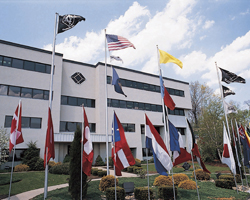 W
WBlack Box Corporation, also doing business as Black Box Network Services, is headquartered in the Pittsburgh suburb of Lawrence, Pennsylvania, United States. The company is a provider of communications products.
 W
WThe bullroarer, rhombus, or turndun, is an ancient ritual musical instrument and a device historically used for communicating over great distances. It dates to the Paleolithic period, being found in Ukraine dating from 18,000 BC. Anthropologist Michael Boyd, a bullroarer expert, documents a number found in Europe, Asia, Africa, the Americas, and Australia.
 W
WIn the 9th century, during the Arab–Byzantine wars, the Byzantine Empire used a semaphore system of beacons to transmit messages from the border with the Abbasid Caliphate across Asia Minor to the Byzantine capital, Constantinople.
 W
WThe cambarysu was a drum which Jose Bach said he saw the Catuquinaru tribe of Brazil use, when he visited them in 1896-97, to communicate between villages.
 W
WClaude Chappe was a French inventor who in 1792 demonstrated a practical semaphore system that eventually spanned all of France. His system consisted of a series of towers, each within line of sight of others, each supporting a wooden mast with two crossarms on pivots that could be placed in various positions. The operator in a tower moved the arms to a sequence of positions, spelling out text messages in semaphore code. The operator in the next tower read the message through a telescope, then passed it on to the next tower. This was the first practical telecommunications system of the industrial age, and was used until the 1850s when electric telegraph systems replaced it.
 W
WCharles Augustus Cheever was an American industrialist and inventor. He was affiliated with Alexander Graham Bell and Thomas Edison improving their inventions. He patented 100 of these improvements, most related to the telephone. Cheever formed the Telephone Company of New York and constructed the first telephone line in New York City. He was disabled early in his life and was an invalid.
 W
WThe Crypto Wars is an unofficial name for the U.S. and allied governments' attempts to limit the public's and foreign nations' access to cryptography strong enough to resist decryption by national intelligence agencies.
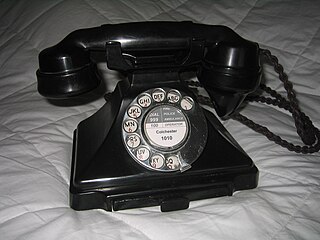 W
WThe director telephone system was a development of the Strowger or step-by-step (SXS) switching system used in London and five other large cities in the UK from the 1920s to the 1970s.
 W
WDot matrix printing, sometimes called impact matrix printing, is a computer printing process in which ink is applied to a surface using a relatively low-resolution dot matrix for layout. Dot matrix printers typically use a print head that moves back and forth or in an up-and-down motion on the page and prints by impact, striking an ink-soaked cloth ribbon against the paper, much like the print mechanism on a typewriter or line printer. However, a dot matrix printer is able to print arbitrary patterns and not just specific characters.
 W
WDeveloped and used by cultures living in forested areas, drums served as an early form of long-distance communication, and were used during ceremonial and religious functions.
 W
WCyrille Duquet was a Canadian goldsmith, flutist, and inventor in Quebec. Originally working in the field of clocks and watches, he was also a passionate jewelry collector.
 W
WEarth-return telegraph is the system whereby the return path for the electric current of a telegraph circuit is provided by connection to the earth through an earth electrode. Using earth return saves a great deal of money on installation costs since it halves the amount of wire that is required, with a corresponding saving on the labour required to string it. The benefits of doing this were not immediately noticed by telegraph pioneers, but it rapidly became the norm after the first earth-return telegraph was put into service by Carl August von Steinheil in 1838.
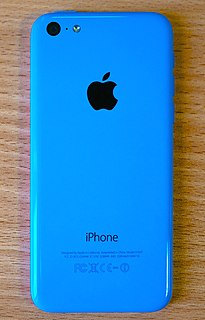 W
WThe FBI–Apple encryption dispute concerns whether and to what extent courts in the United States can compel manufacturers to assist in unlocking cell phones whose data are cryptographically protected. There is much debate over public access to strong encryption.
 W
WDale Heatherington helped Dennis C. Hayes in the development of Hayes Microcomputer Products, the company that pioneered the Hayes modem and the Hayes command set.
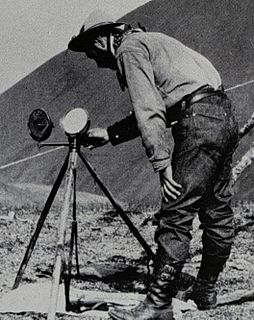 W
WA heliograph is a semaphore system that signals by flashes of sunlight reflected by a mirror. The flashes are produced by momentarily pivoting the mirror, or by interrupting the beam with a shutter. The heliograph was a simple but effective instrument for instantaneous optical communication over long distances during the late 19th and early 20th century. Its main uses were military, survey and forest protection work. Heliographs were standard issue in the British and Australian armies until the 1960s, and were used by the Pakistani army as late as 1975.
 W
WThe history of videotelephony covers the historical development of several technologies which enable the use of live video in addition to voice telecommunications. The concept of videotelephony was first popularized in the late 1870s in both the United States and Europe, although the basic sciences to permit its very earliest trials would take nearly a half century to be discovered. This was first embodied in the device which came to be known as the video telephone, or videophone, and it evolved from intensive research and experimentation in several telecommunication fields, notably electrical telegraphy, telephony, radio, and television.
 W
WThe true messenger pigeon is a variety of domestic pigeons derived from the wild rock dove, selectively bred for its ability to find its way home over extremely long distances. The rock dove has an innate homing ability, meaning that it will generally return to its nest using magnetoreception. Flights as long as 1,800 km have been recorded by birds in competitive pigeon racing. Their average flying speed over moderate 965 km distances is around 97 km/h and speeds of up to 160 km/h have been observed in top racers for short distances.
 W
WA hydraulic telegraph refers to two different semaphore systems involving a hydraulic-telegraph. The earliest one was developed in 4th-century BC Greece, while the other was developed in 19th-century AD Britain. The Greek system was deployed in combination with semaphoric fires, while the latter British system was operated purely by hydraulic fluid pressure.
 W
WThe Imperial Wireless Chain was a strategic international communications network of powerful long range radiotelegraphy stations, created by the British government to link the countries of the British Empire. The stations exchanged commercial and diplomatic text message traffic transmitted at high speed by Morse code using paper tape machines. Although the idea was conceived prior to World War I, the United Kingdom was the last of the world's great powers to implement an operational system. The first link in the chain, between Leafield in Oxfordshire and Cairo, Egypt, eventually opened on 24 April 1922, with the final link, between Australia and Canada, opening on 16 June 1928.
 W
WUSNS Kingsport (T-AG-164) was built as SS Kingsport Victory, a United States Maritime Commission VC2-S-AP3 (Victory) type cargo ship. During the closing days of World War II the ship was operated by the American Hawaiian Steamship Company under an agreement with the War Shipping Administration. After a period of layup the ship was operated as USAT Kingsport Victory by the Army under bareboat charter effective 8 July 1948. When Army transports were transferred to the Navy's Military Sea Transportation Service the ship continued as USNS Kingsport Victory (T-AK-239), a cargo transport. On 14 November 1961, after conversion into the first satellite communication ship, the ship was renamed Kingsport, reclassified as a general auxiliary, and operated as USNS Kingsport (T-AG-164).
 W
WMechanical television or mechanical scan television is a television system that relies on a mechanical scanning device, such as a rotating disk with holes in it or a rotating mirror drum, to scan the scene and generate the video signal, and a similar mechanical device at the receiver to display the picture. This contrasts with vacuum tube electronic television technology, using electron beam scanning methods, for example in cathode ray tube (CRT) televisions. Subsequently, modern solid-state liquid-crystal displays (LCD) are now used to create and display television pictures.
 W
WOperation Ivy Bells was a joint United States Navy, Central Intelligence Agency (CIA), and National Security Agency (NSA) mission whose objective was to place wire taps on Soviet underwater communication lines during the Cold War.
 W
WThe photophone is a telecommunications device that allows transmission of speech on a beam of light. It was invented jointly by Alexander Graham Bell and his assistant Charles Sumner Tainter on February 19, 1880, at Bell's laboratory at 1325 L Street in Washington, D.C. Both were later to become full associates in the Volta Laboratory Association, created and financed by Bell.
 W
WPigeon post is the use of homing pigeons to carry messages. Pigeons were effective as messengers due to their natural homing abilities. The pigeons were transported to a destination in cages, where they would be attached with messages, then the pigeon would naturally fly back to its home where the recipient could read the message. They have been used in many places around the world. Pigeons have also been used to great effect in military situations, and are in this case referred to as war pigeon.
 W
WDot matrix printing, sometimes called impact matrix printing, is a computer printing process in which ink is applied to a surface using a relatively low-resolution dot matrix for layout. Dot matrix printers typically use a print head that moves back and forth or in an up-and-down motion on the page and prints by impact, striking an ink-soaked cloth ribbon against the paper, much like the print mechanism on a typewriter or line printer. However, a dot matrix printer is able to print arbitrary patterns and not just specific characters.
 W
WThe Prussian Semaphore System was a telegraphic communications system used between Berlin and the Rhine Province from 1832 to 1849. It could transmit administrative and military messages by optical signal over a distance of nearly 550 kilometres (340 mi). The telegraph line comprised 62 stations each furnished with a signal mast with six cable-operated arms. The stations were equipped with telescopes that operators used to copy coded messages and forward them to the next station. Three dispatch departments located in Berlin, Cologne and Koblenz handled the coding and decoding of official telegrams. Although electric telegraphy made the system obsolete for military use, simplified semaphores were still used for railway signals.
Racal Electronics plc was a British electronics company, founded in 1950.
 W
WThe Relay program consisted of Relay 1 and Relay 2, two early American satellites in elliptical low Earth orbit. Both were primarily experimental communications satellites funded by NASA and developed by RCA. As of December 2, 2016, both satellites were still in orbit. Relay 1 provided the first American television transmissions across the Pacific Ocean.
 W
WRYRYRYRY... is a character string that was widely used to test a five-level teleprinter or RTTY channel. The characters R and Y are "01010" and "10101" in 5-bit ITA2 code, also known as Baudot. Thus they are Boolean complements of each other.
 W
WAn optical telegraph is a semaphore system using a line of stations, typically towers, for the purpose of conveying textual information by means of visual signals. There are two main types of such systems; the semaphore telegraph which uses pivoted indicator arms and conveys information according to the direction the indicators point, and the shutter telegraph which uses panels that can be rotated to block or pass the light from the sky behind to convey information.
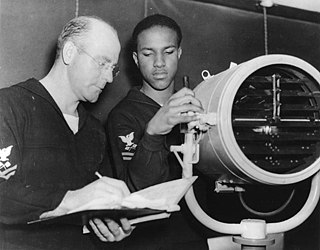 W
WA signal lamp is a semaphore system using a visual signaling device for optical communication, typically using Morse code.
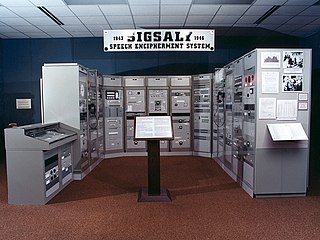 W
WSIGSALY was a secure speech system used in World War II for the highest-level Allied communications. It pioneered a number of digital communications concepts, including the first transmission of speech using pulse-code modulation.
 W
WKeneth Alden Simons was an American electrical engineer best known for his pioneering contributions to the technical development of cable television in the United States, for the most part as chief engineer for the Jerrold Electronics Corporation. Jerrold was one of the first manufacturers of cable television equipment and also constructed entire cable systems. Simons designed one of the first converters and the two most important pieces of the early test equipment, the Model 704 Field Strength Meter and Model 900 Sweep Frequency Generator. He also authored a seminal technical handbook on cable television systems, and served on national and international engineering standards committees. Fellow cable engineer Archer Taylor stated that Simons was seen as the leading technical expert at Jerrold for over two decades.
 W
WA smartbook was a class of mobile device that combined certain features of both a smartphone and netbook computer, produced between 2009 and 2010. Smartbooks were advertised with features such as always on, all-day battery life, 3G, or Wi-Fi connectivity and GPS in a laptop or tablet-style body with a screen size of 5 to 10 inches and a physical or soft touchscreen keyboard.
 W
WThe smoke signal is one of the oldest forms of long-distance communication. It is a form of visual communication used over a long distance. In general smoke signals are used to transmit news, signal danger, or gather people to a common area.
 W
WA speaking tube or voicepipe is a device based on two cones connected by an air pipe through which speech can be transmitted over an extended distance.
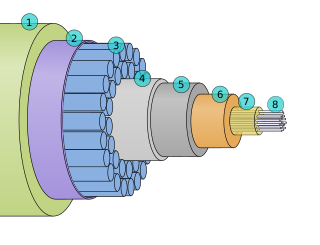 W
WA submarine communications cable is a cable laid on the sea bed between land-based stations to carry telecommunication signals across stretches of ocean and sea. The first submarine communications cables laid beginning in the 1850s carried telegraphy traffic, establishing the first instant telecommunications links between continents, such as the first transatlantic telegraph cable which became operational on 16 August 1858. Subsequent generations of cables carried telephone traffic, then data communications traffic. Modern cables use optical fibre technology to carry digital data, which includes telephone, Internet and private data traffic.
 W
WThroughout the 20th century, telephone switchboards were devices used to connect circuits of telephones to establish telephone calls between users and/or other switchboards. The switchboard was an essential component of a manual telephone exchange, and was operated by switchboard operators who used electrical cords or switches to establish the connections.
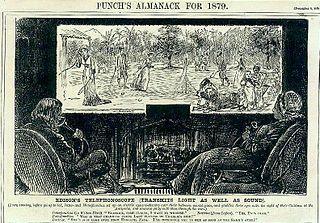 W
WA telephonoscope was an early concept of videophone and television, conceptualized in the late 1870s through the 1890s. It was mentioned in various early science fiction works such as Le Vingtième siècle. La vie électrique and other works written by Albert Robida. It was also sketched in various cartoons by George du Maurier as a fictional invention by Thomas Edison including one made on December 9, 1878 in Punch magazine.
 W
WA teleprinter is an electromechanical device that can be used to send and receive typed messages through various communications channels, in both point-to-point and point-to-multipoint configurations. Initially they were used in telegraphy, which developed in the late 1830s and 1840s as the first use of electrical engineering, though teleprinters were not used for telegraphy until 1887 at the earliest. The machines were adapted to provide a user interface to early mainframe computers and minicomputers, sending typed data to the computer and printing the response. Some models could also be used to create punched tape for data storage and to read back such tape for local printing or transmission.
 W
WDot matrix printing, sometimes called impact matrix printing, is a computer printing process in which ink is applied to a surface using a relatively low-resolution dot matrix for layout. Dot matrix printers typically use a print head that moves back and forth or in an up-and-down motion on the page and prints by impact, striking an ink-soaked cloth ribbon against the paper, much like the print mechanism on a typewriter or line printer. However, a dot matrix printer is able to print arbitrary patterns and not just specific characters.
 W
WTicker tape was the earliest electrical dedicated financial communications medium, transmitting stock price information over telegraph lines, in use from around 1870 through 1970. It consisted of a paper strip that ran through a machine called a stock ticker, which printed abbreviated company names as alphabetic symbols followed by numeric stock transaction price and volume information. The term "ticker" came from the sound made by the machine as it printed.
 W
WTotal Access Communication System (TACS) and ETACS are mostly-obsolete variants of Advanced Mobile Phone System (AMPS) which was announced as the choice for the first two UK national cellular systems in February 1983, less than a year after the UK government announced the T&Cs for the two competing mobile phone networks in June 1982.
 W
WThe Volta Laboratory and the Volta Bureau were created in Georgetown, Washington, D.C. by Alexander Graham Bell.
 W
WThomas Augustus Watson was an assistant to Alexander Graham Bell, notably in the invention of the telephone in 1876.
 W
WThe World Wireless System was a turn of the 20th century proposed telecommunications and electrical power delivery system designed by inventor Nikola Tesla based on his theories of using Earth and its atmosphere as electrical conductors. He claimed this system would allow for "the transmission of electric energy without wires" on a global scale as well as point-to-point wireless telecommunications and broadcasting. He made public statements citing two related methods to accomplish this from the mid-1890s on. By the end of 1900 he had convinced banker J. P. Morgan to finance construction of a wireless station based on his ideas intended to transmit messages across the Atlantic to England and to ships at sea. His decision to change the design to include wireless power transmission to better compete with Guglielmo Marconi's new radio based telegraph system was met with Morgan's refusal to fund the changes. The project was abandoned in 1906, never to become operational.
 W
WThe use of wireless telegraphy in the Italo-Turkish war was the first example of its large-scale military application, its origins dating from the end of the 1880s.
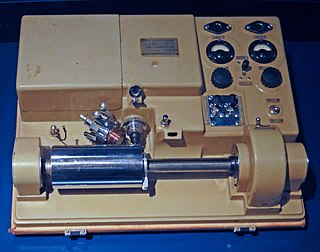 W
WWirephoto, telephotography or radiophoto is the sending of pictures by telegraph, telephone or radio.